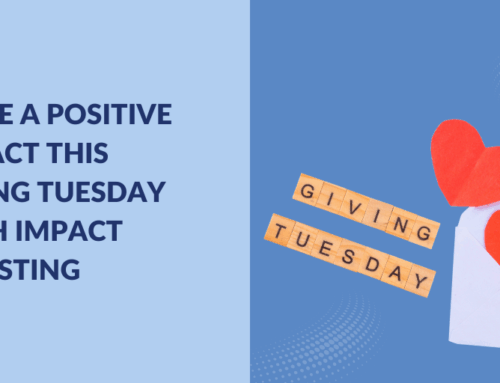Like anyone else, you want a life insurance policy that meets your needs and budget. But how do you find the right policy when there are so many to choose from and many of them seem so similar? The key is knowing how to compare policies and evaluate the results.
Know what you want–and compare apples to apples
Your first step should be to assess your life insurance needs. For instance, do you need $100,000 of coverage or $250,000? Would you be better off with term life or a cash value policy? If you’re buying term life, how many years of coverage do you want? Are there any special features that you want in a policy? How much can you afford to pay in premiums? If you haven’t answered questions like these yet, you probably should before you start comparing policies. Otherwise, you may end up comparing apples to oranges. For example, if you’re torn between a term life policy and a cash value policy, the decision you face isn’t really about two particular policies–it’s more about which type of insurance is best for you.
Detailed policy comparisons make the most sense when you know exactly what you’re looking for. This makes your job easier, because you can narrow your choices down to policies that provide the same type and amount of coverage. The more similar the policies you’re comparing, the more accurate and useful your results will be.
Try to get the most bang for your buck
Don’t make the mistake of comparing only insurance companies and not policies. Instead, choose a few reputable companies and get price quotes for the coverage you want. Premiums may vary widely among companies for comparable coverage, and even the same company may offer very similar policies at different prices. Should you buy the policy with the lowest annual premium? It depends. When comparing term policies that provide the same amount of coverage for the same period, a simple comparison of premiums may be sufficient. But this is the exception, not the rule.
The premium is an important factor when comparing policies, but often it doesn’t tell the whole story. What you really want is the best overall value for your money. To determine a policy’s true value, you have to dig a little deeper. Carefully read the fine print of each policy you’re considering, and ask lots of questions during sales presentations. A closer look at two or more policies may reveal key differences that would have gone unnoticed. Here are some things to look for and ask about:
- Do policy premiums or benefits vary from year to year? If so, what part of the premiums or benefits is guaranteed, and what part is not?
- If a cash value policy, what are the company’s projections of future cash value? How do those projections stack up against other cash value policies? Are the assumptions in those projections realistic?
- Can you access the cash value through a withdrawal or loan? What restrictions apply? What is the loan interest rate?
- If applicable, is there a guaranteed minimum interest credited on cash values? (Keep in mind that guarantees are subject to the claims-paying ability of the issuing insurance company.)
- What charges and fees are associated with the policy? For example, what surrender charge will you pay if you give up a policy and take out the cash value?
- Can you customize the policy to your needs with options or riders, and at what additional cost? For example, how much extra will you pay for a “waiver of premium in the event of disability or accidental death benefit” rider?
If a more expensive policy has features and provisions that are more favorable to you, it may sometimes be more cost effective to pay the higher premium. Of course, comparing policies to find a good value is also important when the policies you’re looking at all have roughly the same premium.
Run some numbers
Depending on how far you’re willing to go, comparing life insurance policies can become a complex numbers game. Insurance professionals use a number of methods to mathematically compare and evaluate policies. Most of these methods are designed to measure the true cost or value of a policy by taking into account factors other than premiums. These may include surrender charges, sales and administrative expenses, taxes, rates of return on cash values, policy dividend projections, and the cost per $1,000 of pure protection, both guaranteed and projected.
Two cost-comparison methods are widely used in the industry: the net payment cost comparison index and the surrender cost comparison index. The National Association of Insurance Commissioners, a group of state regulators, adopted these indexes to help consumers compare life insurance policies. Most states require insurance sales professionals to run these numbers for you, so be sure to ask for this service if it’s not offered to you. However, these indexes will produce useful results only when you’re comparing similar types of policies.
The advantage of any comparison method is that it can help take some of the subjectivity out of comparing policies. But all of these methods have shortcomings and limitations. Most of them rely on the assumptions and projections of the company that wrote the policy. Some of them apply only when you’re comparing policies with the same premium outlay. Finally, no index tells you everything you need to know about a particular policy. Use the results only to supplement what you learn from reading the policy, from sales presentations, and from other sources.
Get professional help–you’ll be glad you did
As you can see, comparing life insurance policies is not for the faint of heart. Doing it properly takes a combination of patience, persistence, and industry knowledge. Few consumers have the resources or expertise to do the necessary work on their own. In fact, it would probably take a full-time staff of experts just to compare and evaluate all of the life insurance policies on the market!
Obviously, such large-scale comparisons are not realistic, but having even one professional on your side can make a big difference. A qualified insurance professional can assess your insurance needs, make sense of complex sales illustrations, and conduct a cost-benefit analysis of similar policies. But don’t just pick any name out of the phone book–shop around for someone who’s qualified and trustworthy. With the right person working for you, you’ll be well on your way to finding a suitable policy that won’t break the bank.
One final word of caution about policy sales illustrations: It’s important to ask lots of questions about these illustrations because some of them can be misleading. For example, the illustrations of some companies are based on unrealistic assumptions about a policy’s future cash value.
Have questions on this topic? Contact Dave Cimmarusti, Director of Risk Management, at 630.584.8100, or email Dave at dcimm@onpathfinancial.com. One of OnPath financial advisors will follow up with you to discuss your situation.
Content Provider: Broadridge
LPL Tracking 1-183420






